- It’s What We Do
- Kashmir: mystic adventure – Over the top…literally
- 25 years, 280 DRZs and only one Roy Kunda – Suzuki’s best customer?
- BMW Safari Enduro – No bull! No wait…
- Triumph Tiger Explorer 1200 – Updated, upgraded and up to the job
- WTF – Not what you think
- LEDs – Light work
- The Precious 3: Peter Payne’s XT1200Z Ténéré
- Industry player – Philth Hodgens
- HARD Kits Husky 710 – Phwoar!
- Reader’s ride – I Finke, therefore I am
- Cornered with Karen Ramsay
- Preparing for adventure with Andrea Box
- How To Ride with Miles Davis
- Checkout
- Fit Out
Triumph’s updates to its Tiger Explorer mean it’s a big hitter in what’s fast becoming the hardest-fought class in adventure riding.
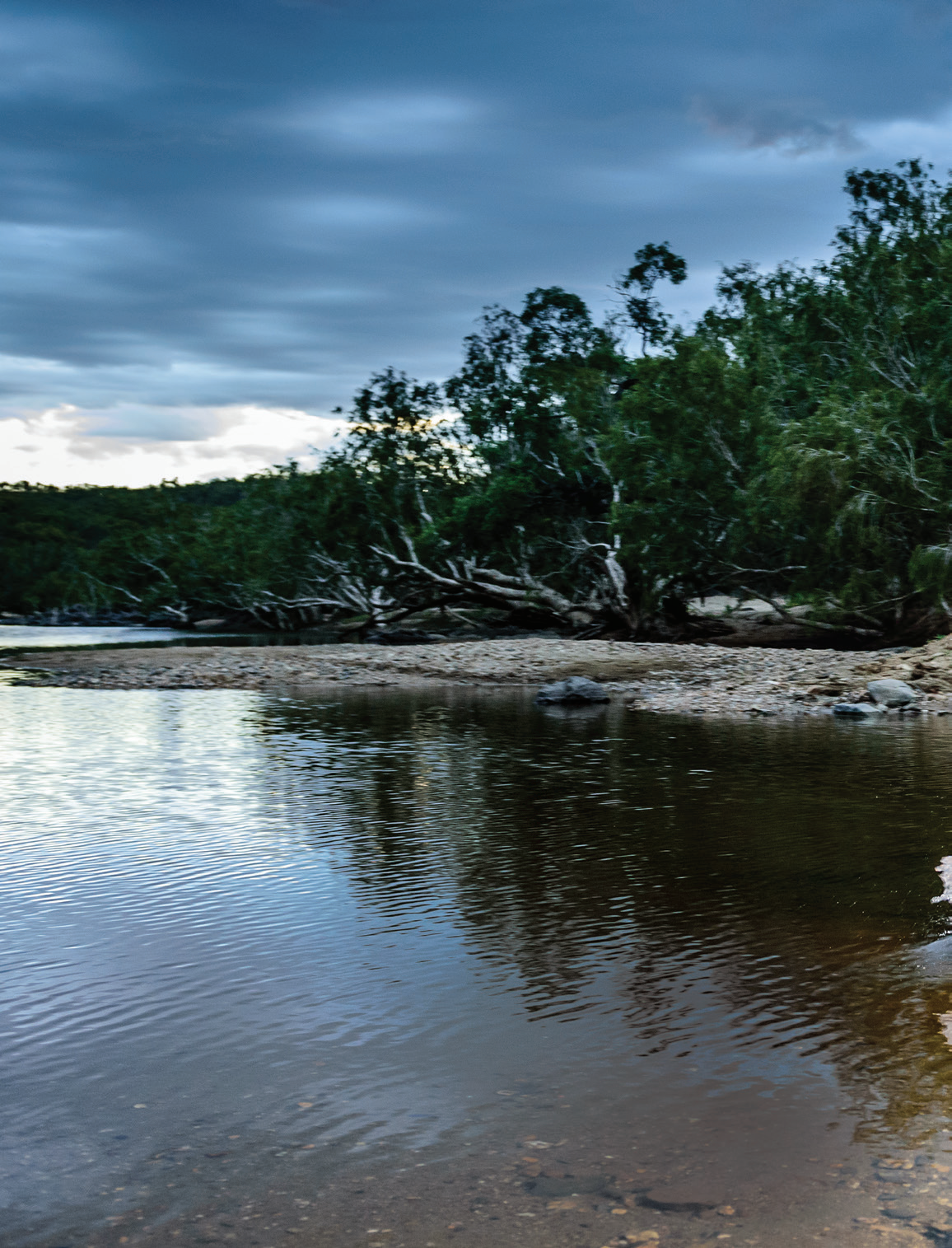
We first rode the Triumph Tiger Explorer 1200 back in issue #03, and while we reckoned it was a great long-distance bike with a sensational motor, we felt the suspension was a smidge light on for anything more than casual off-roading. We reckoned the traction control was just a little intrusive and the ABS was good in the off-road setting. It was a great long-distance bike with good off-road capability.
For 2016, Triumph has pulled apart the Explorer, kept all the best bits, and rebuilt the bike with a stack of great components and up-to-the-minute electronics. The first incarnation of the bike was great, but with upgraded brakes, suspension, electronics and looks, the 2016 model is really some-thing special.
Updates
Triumph’s three-cylinder engine is a gem.
It’s linear power and torque delivery and proven reliability make it a great asset to any bike, and we’re glad to say the 1215cc, liquid-cooled, 12-valve powerplant looks to be pretty much the same motor we’ve rated so highly since its first appearance. It has a couple of extra horsepower and a bee’s dick more torque than the first incarnation of the Explorer, but it’s essentially, mechanically, the same.
The big refinements for Triumph’s high-end adventurer are in the electronics, rider modes and suspension.
Sticking with the motor for a moment, the Explorer steps up to the mark with Road, Rain and Off Road modes on the XCX, and an additional Sport and fully programmable Rider mode on the XCA.
The base model XR and XC won’t be offered in Australia, and that seems entirely sensible to us. For just a small addition to the purchase price the features on the XCX and XCA would make it very difficult for a buyer to choose the base model. We rode the XCA, and while the additional two rider modes were nice, the heated seats, electrically adjustable screen, pannier rails, Tyre Pressure Monitoring System, Hill Hold, CNC machined footpegs and LED auxiliary lights made for a premium touring package.
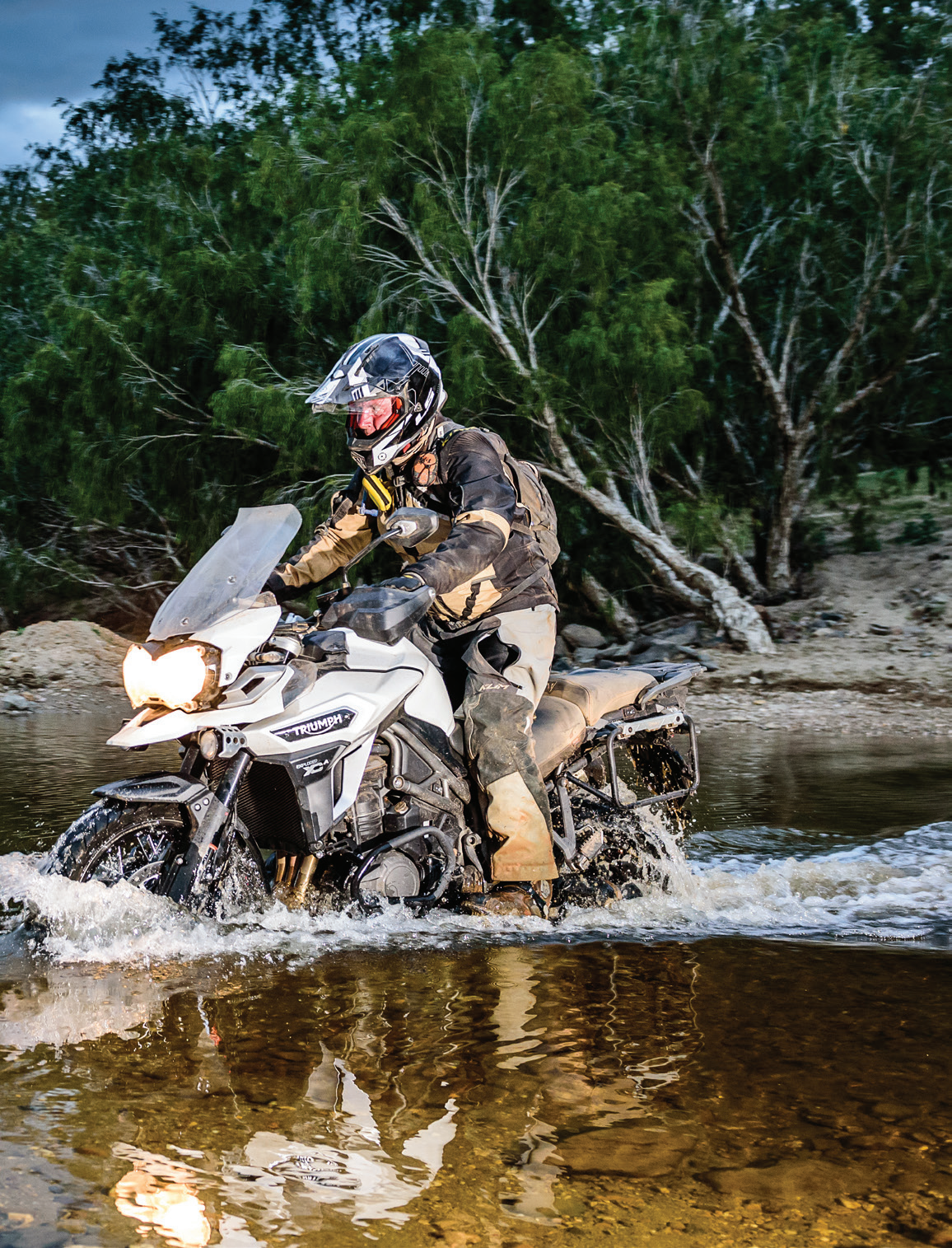 The Explorer is well suited to long distances, high speeds and to negotiating challenging terrain of all kinds.
The Explorer is well suited to long distances, high speeds and to negotiating challenging terrain of all kinds.
TSAS
For 2016 the Explorer gets WP suspension,and it’s a very noticeable step up from the KYB components on the previous model. We still found the forks a little unforgiving in the initial part of the stroke over corrugations and sharp-edges, but we felt the overall performance of the suspension was much improved, especially on big hits.
Why didn’t we try and twist a clicker or two?
We’re glad you asked.
The Explorer now has electronically controlled semi-active suspension. A rider can select ‘Auto’ and let the bike do the rest. That’s where we ended up. It’s a set-and-forget option, and we went for it.
The other setting is Off-road, and we sheepishly admit we don’t remember what happened there. We tried it, but can’t remember whether it gave us any advantage. There are so many options within each mode and setting we were in danger of ignoring the ride and concentrating on the menu, and there was no way we were falling for that.
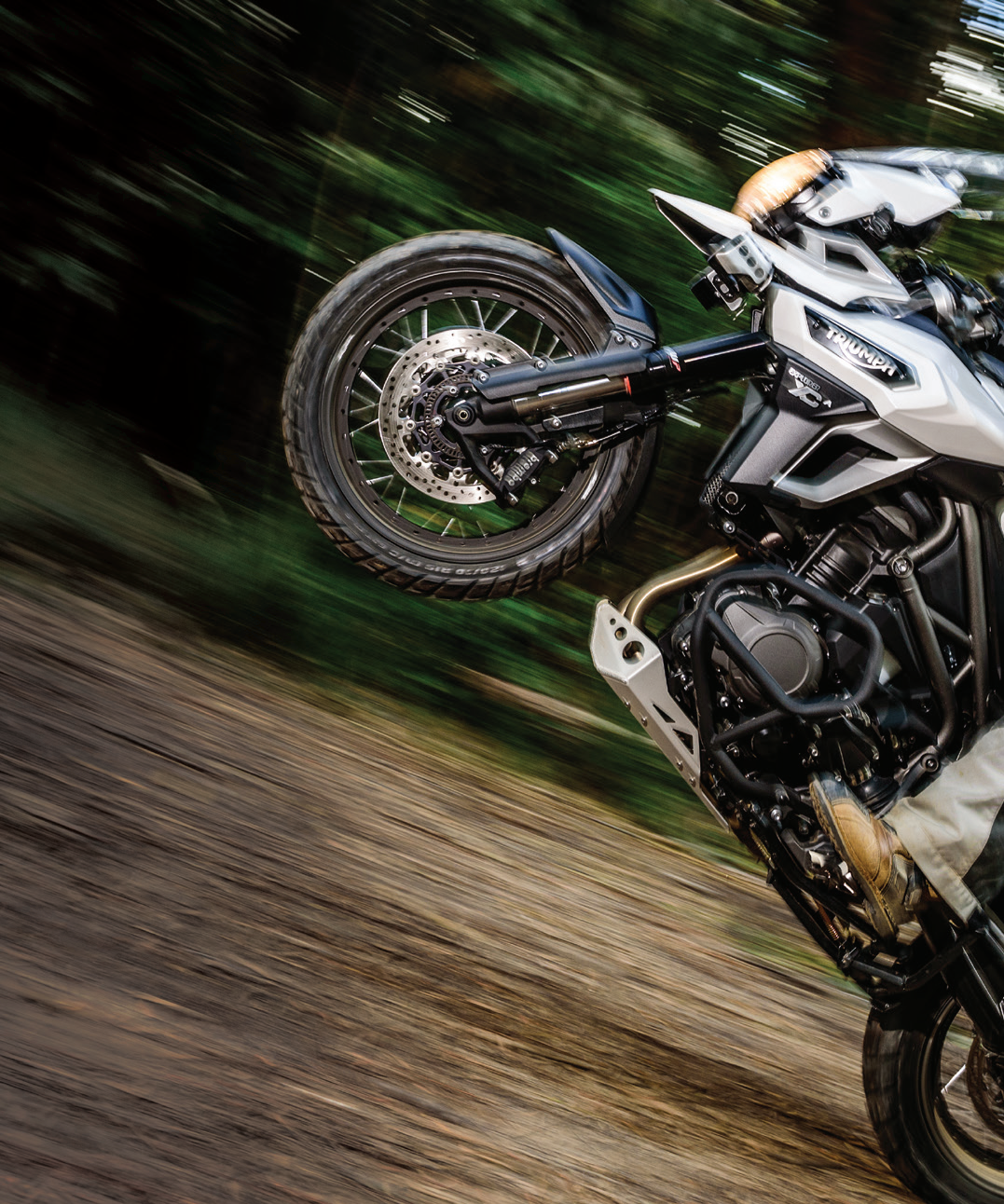 There’s still plenty of sportiness in this dualsport package.
There’s still plenty of sportiness in this dualsport package.
The suspension system is sensibly named ‘Triumph Semi Active Suspension’ – TSAS – and the difference in feel between some of the options is quite marked. Once a suspension option is selected, a rider can fine tune on the fly. A touch of the menu rocker offers a sliding scale from Sport through Normal and on to Comfort. Rocking the switch up or down allows stepping in graduations until a comfortable spot is found.
The electronics package also allows optimised cornering traction control and ABS. We still haven’t managed to clear the poo stains from our jocks after our experimenting with cornering traction control on the Ducati, so we were a little more reserved with the Explorer, but we once again found ourselves comfortably riding at speeds we felt should’ve been way beyond us, and we never once in the four-day test had a scary moment.

The Triumph guys encouraged us to grab the front brake during high-speed cornering on asphalt, and while we couldn’t summon the courage to ‘grab’ the lever,we did give it a tentative squeeze, only to find the stopper sort of refused to hook up. As the bike leans over, the rider aids make the appropriate adjustments to stop ham-fisted journos doing anything life-threatening with either throttle or brakes.
Phew.
But wait. There’s more
The suspension and electronics are major upgrades for this bike, for sure, but we feel as though the Brembo brake on the front could be overlooked, and it’s a big contributor to the Explorer’s comfort and performance. The previous model had Nissins front and rear, and they were great, but man! The twin-disc, four-spot-caliper Brembos on the front of the new bike are really, really nice. Feel is excellent and stopping power is strong.
The rear is still a Nissin set-up, and it’s excellent, but the front is something a cut above.
Of course the ABS has a few different choices in the menu, and we liked the front in Off-road and the rear off. That worked well for us on the dirt. If we were on bitumen we’d just turn the key and ride away. The default setting is Road, and for about 99 per cent of the bitumen riding we’d do, it’s an ideal choice. We got a little feisty at times and ran in Sport. That gave a shorter throttle pull and seemed all racy, but we doubt it made us any quicker across a day’s ride. It felt good though, for sure.The electronic windscreen is a nice touch.
Again it’s a matter of hitting the menu button and rocking up or down to have the screen whirr into position. We kept the screen in the low position on rough ground because it seemed to be oscillating just a little too much for comfort. It didn’t flap or wobble, it just didn’t seem right to have it putting up with the punishment when a touch of the button could have it snugged down and under far less stress. On the open roads at speed we were glad to be able to ease that puppy up and enjoy a very much quieter and smoother ride.
Noice, Kimmy
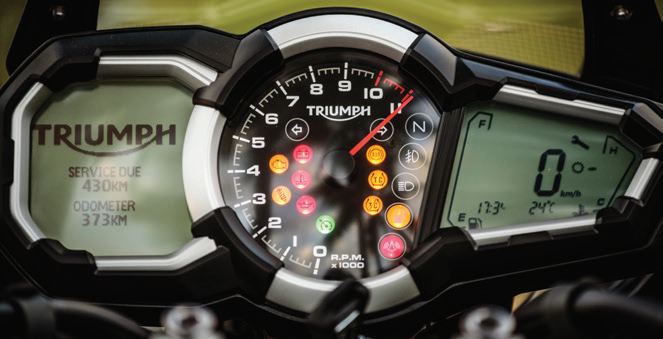
And…
We don’t want to get too carried away with minor details, but there’s a lot going on with the new Explorer, and even the minor things impressed us.
The sound of the bike from the stock pipe is just plain horny. There’s an aftermarket Arrow pipe available, and it’s probably a good option, but we’d take some convincing. The stock pipe is a stainless-steel can that’s a little shorter and lighter than last year’s model, and while it’s fairly quiet, it still lets the Tiger roar.
The single-sided swingarm/drive train means the off side of the bike has that open-wheel look. It doesn’t mean anything performance-wise, but geez it looks good.
The wheels are a tad wider in the new model as well, and combined with the shape of the bike the whole package just has a brooding, compact, athletic look.
As far as accessories ago, Triumph has adventure riders, especially long-distance riders, well covered. There’s top boxes, panniers, crash bars and all sorts of Triumph-branded gear available.
Finally, we just want to tip our hats to Triumph for the seats on the Tigers.
They’re probably the most comfortable on the market, and even though we didn’t use the heating on the seats of the XCA on our ride, we’d look forward to flicking that particular switch when the temperature dropped – as would we the heated grips. Adjusting the seat height to gain or lose 20mm takes just a few seconds. It’s one of the best set ups we’ve seen.

Seat of the pants
With all that high-end engineering and electronics taken into account, what’s it like to actually plonk your bum on the seat, hit the starter, and set it all in motion?
It’s really frigging nice.
The smooth, three-cylinder motor offers the same fuss-free riding it always has, with plenty of horsepower and one of the most manageable torque curves in the market.
The ergonomics seem to be designed to encourage destroying large distances with a minimum of fuss in maximum comfort, and the pleasure of equipment like the braking and ride-by-wire cruise control make every facet of the riding experience a pleasure.
Fanging along the bitumen at highly illegal speeds is way too easy, and battling sand, river crossings, wet clay and all the other aspects of off-road adventure riding is mother’s milk to the Explorer. The bike’s heavy, but it’s a
1200, ferchrissake. They’re all heavy.
It’s not designed to finish Erzberg.
It’s meant to be, in Triumph’s own words, ‘the ultimate trans-continental adventure motorcycle’.
If it’s not the ultimate, it must be very close.
About the only thing we felt still needed refinement was the traction control in the Off-road mode. We think it’s still just a little too over-protective. It’s fine about 80 per cent of the time, but on an uphill with corrugations or even in sand or rocky creek crossings it’s just a little too intrusive. The Off-road mode on the XCA can be preset with traction control off so it doesn’t need to be dealt with every time the mode is selected, and that’s where we ended up.
Most riders choosing a bike in this class won’t be expecting to do some of the tougher terrain we covered, and for them, the stock settings will be fine, but for us – being so manly and rough’n’tough an’ that – we preferred the wheel-spinning, tyre-destroying option of 139 horsepower let loose.
Hoo-ahh!
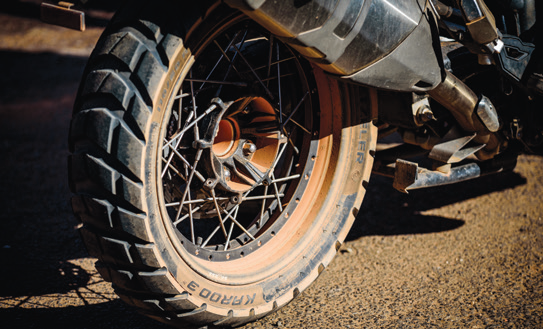 The single-sided swingarm looks horn.
The single-sided swingarm looks horn.
Add ons
The accessory catalogue for the new Explorer is impressive, and includes everything from luggage through to accessory lighting and protective clobber to little bags and mounts for phones and GPS units. A rider heading out on a round-the-world epic could pick up a bike and everything he needed with one stop at a Triumph dealer.
Of course the equipment to upgrade the XCX to XCA spec is available separately.
The hard part
The 2016 Explorer is a superb long-distance, all-terrain bike. It’s comfortable and very capable, on- and off-road.
The electronics package is well up to the mark with its competition and it has some excellent equipment on board. At $26,700 plus on-roads for the XCA and $24,200 plus on-roads for the XCX and XCX Low, it’s priced in about the right spot, so anyone looking for a big dual-sporter should consider it a frontrunner.
The problem we see for Triumph is getting through to people just how good the bike is. It takes a little time to appreciate how well the bike and its systems work, and a rider probably won’t see that in a test run around the block from a dealer. The bike itself is the problem. It’s so damn comfortable and fuss-free riders won’t understand how good it is until they’ve spent a little time with it.
Make the time if you can. You’ll be on a winner if you do.
Triumph Tiger Explorer
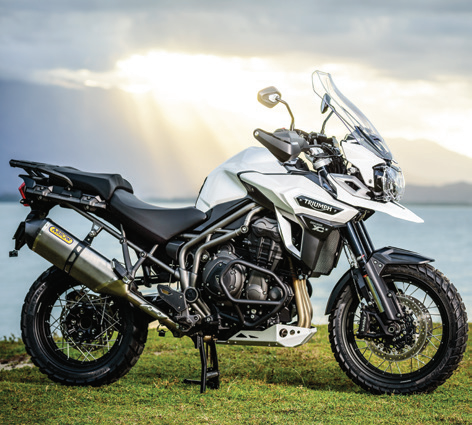
Engine: Liquid-cooled, 12-valve, DOHC, in-line, three-cylinder
Capacity: 1215cc
Bore x stroke: 85mm x 71.4mm
Maximum power: 139PS @ 9300rpm
Maximum torque: 123Nm @ 6200rpm
Fuel system: Ride-by-wire, fuel injection
Compression Ratio: 11.0:1
Exhaust: Stainless-steel, three-into-one header system, side-mounted, stainless-steel silencer
Transmission: Six-speed
Clutch: Wet, multi-plate, hydraulically operated, torque assist
Final drive: Shaft
Frame: Tubular steel trellis frame
Swingarm: Single-sided, cast aluminium alloy with shaft drive
Front wheel: 32-spoke, aluminium rim for tubeless 19 inch x 3.0 inch
Rear wheel: 32-spoke, aluminium rim for tubeless 17 inch x 4.5 inch
Front tyre: 120/70 R19
Rear tyre: 170/60 R17
Front suspension: WP 48mm USD forks, rebound and compression damping, electronically adjustable with 190mm of travel
Rear suspension: WP monoshock, electronically adjustable semi-active damping with 193mm of travel and automatic preload adjustment
Front brake: Twin 305mm floating discs, radially mounted monobloc four-piston with switchable ABS Brembo callipers
Rear brake: Single 282mm disc with two-piston Nissin sliding caliper and switchable ABS
Length: 2230mm
Width (at handlebars): 830mm
Height (without mirrors): 1400mm (1470mm with screen in ‘high’ position)
Seat height: 837mm – 857mm. Low-seat version 785mm – to 805mm
Wheelbase: 1520mm
Fuel capacity: 20 litres
Dry weight: XCA 258kg. XCX 253kg
Intended use
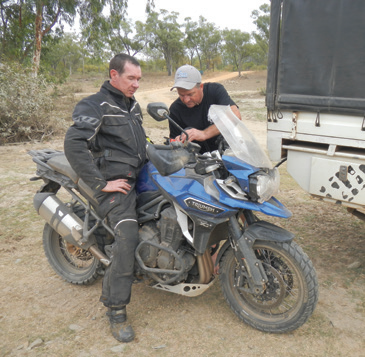
We often write about reviewing bikes and considering their ‘intended use’. By that we mean there’s no point in taking a Postie bike to Eastern Creek or Phillip Island and complaining it gives poor lap times. The bike’s intended use is by people delivering mail who need one-handed operation, incredible reliability and maximum return on financial outlay. To test the bike properly a reviewer should go deliver some mail.
The Triumph Tiger Explorer is a long-distance dualsporter, and, embracing the intended use, Triumph Australia took reviewers on a four-day run through northern Queensland which included some fast bitumen, some tough off-road, some amazing scenery, great fishing, fabulous dining and brilliant stops that included everything from luxury resort accom through to five-star, fully catered camping.
In short, exactly the purpose the Explorer was designed for, we reckon.
Good work Triumph Australia, and thank you.
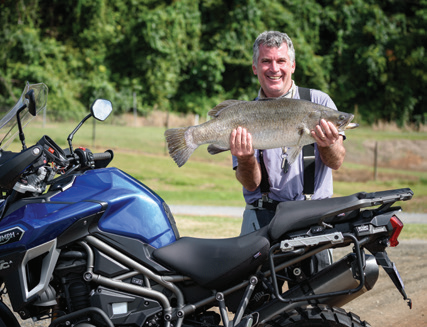
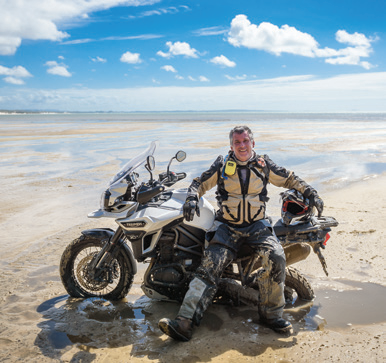
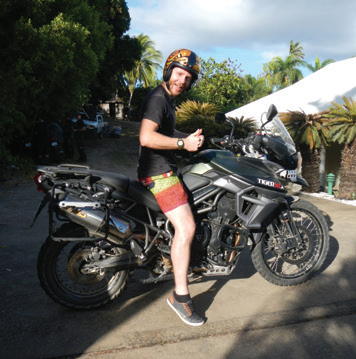
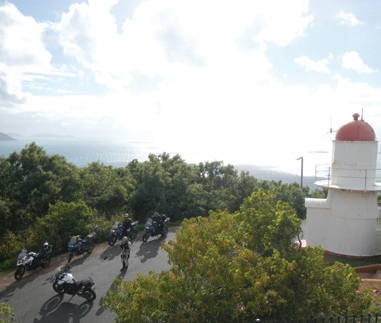



















Comments